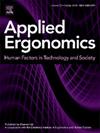Analysis of adaptive systems based on Driver's workload
IF 3.4
2区 工程技术
Q2 ENGINEERING, INDUSTRIAL
引用次数: 0
Abstract
This study examined workload classification models and their application in adaptive in-vehicle systems. A meta-analysis of 31 studies assessed how predictor types (e.g., physiological data), experimental settings (simulator vs. on-road), and device types (wearable vs. remote) influence model accuracy. Results indicated that incorporating physiological data improved model accuracy, although ensuring generalizability remains a challenge. Random Forest models demonstrated the highest average accuracy for binary classification, while Neural Networks showed promise for multi-class models. Adaptive systems leveraging multi-input models were found effective in dynamically adjusting to workload, enhancing safety and user experience. However, challenges such as system over-reliance and limited system implementation persist. Additionally, this study analyzed the existing adaptive systems in the automotive market and proposed design guidelines and a framework for workload-based adaptive systems. Future research should focus on developing robust, context-aware systems tailored to occupational and real-world driving demands, ensuring reliability and widespread applicability.
基于驾驶员工作负荷的自适应系统分析
本研究探讨了工作负荷分类模型及其在自适应车载系统中的应用。对31项研究的荟萃分析评估了预测器类型(如生理数据)、实验设置(模拟器与道路)和设备类型(可穿戴设备与远程设备)如何影响模型准确性。结果表明,纳入生理数据提高了模型的准确性,尽管确保通用性仍然是一个挑战。随机森林模型在二元分类中表现出最高的平均准确率,而神经网络在多类模型中表现出良好的前景。利用多输入模型的自适应系统可以有效地动态调整工作量,增强安全性和用户体验。然而,诸如系统过度依赖和有限的系统实施等挑战仍然存在。此外,本研究还分析了汽车市场上现有的自适应系统,并提出了基于工作量的自适应系统的设计指南和框架。未来的研究应侧重于开发健壮的、环境感知的系统,以适应职业和现实世界的驾驶需求,确保可靠性和广泛的适用性。
本文章由计算机程序翻译,如有差异,请以英文原文为准。
求助全文
约1分钟内获得全文
求助全文
来源期刊

Applied Ergonomics
工程技术-工程:工业
CiteScore
7.50
自引率
9.40%
发文量
248
审稿时长
53 days
期刊介绍:
Applied Ergonomics is aimed at ergonomists and all those interested in applying ergonomics/human factors in the design, planning and management of technical and social systems at work or leisure. Readership is truly international with subscribers in over 50 countries. Professionals for whom Applied Ergonomics is of interest include: ergonomists, designers, industrial engineers, health and safety specialists, systems engineers, design engineers, organizational psychologists, occupational health specialists and human-computer interaction specialists.
 求助内容:
求助内容: 应助结果提醒方式:
应助结果提醒方式:


